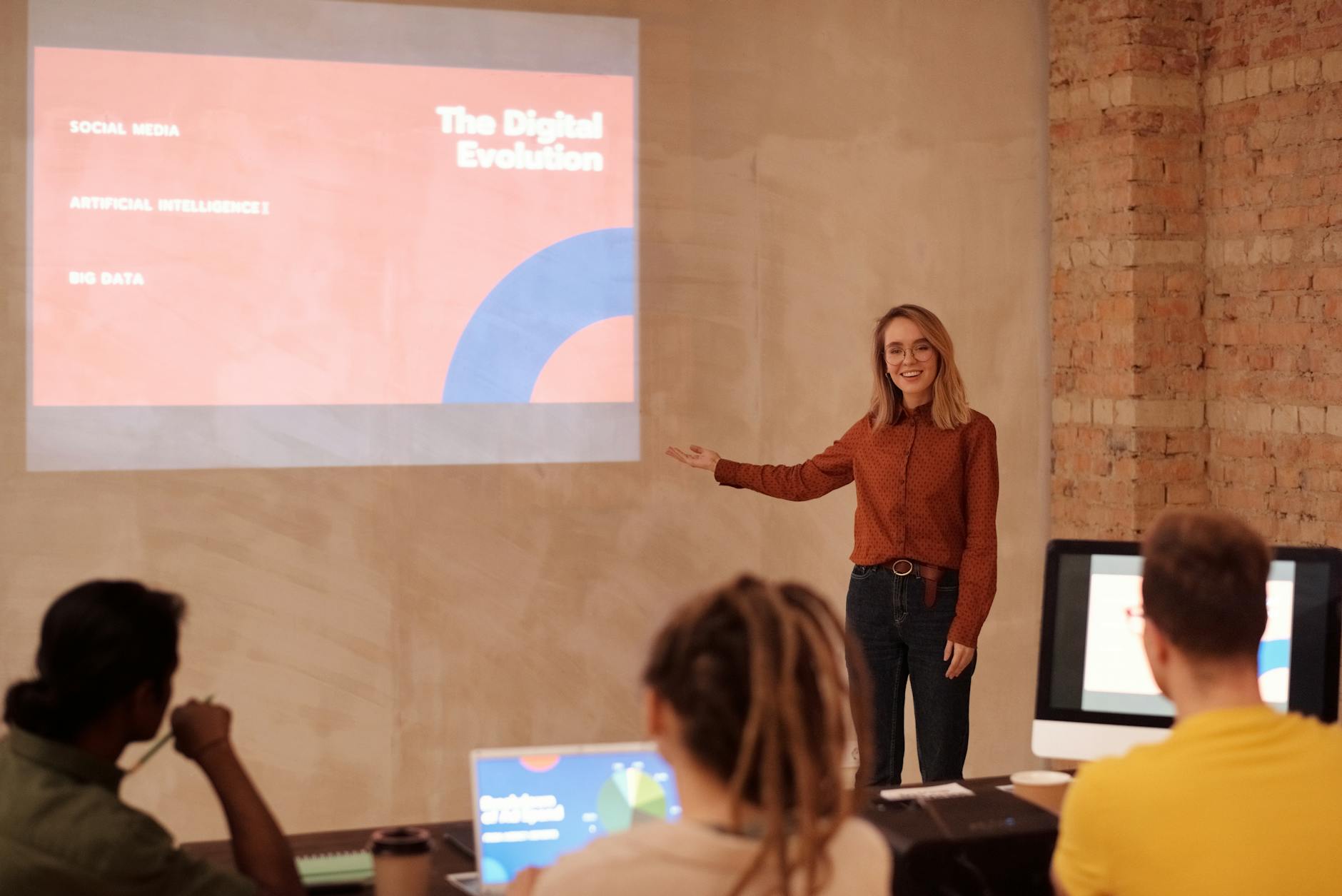AI Myths vs. Facts: Debunking Common Misconceptions About Artificial Intelligence
Artificial Intelligence sparks curiosity and confusion in equal measure. Many believe AI can feel emotions or even threaten humanity, but that’s far from reality. Misconceptions like these shape public opinion and often distort the true capabilities of AI. By separating fact from fiction, we can better understand its actual potential and the role it plays in shaping our future. Let’s clear the air and uncover the truth behind some of the most persistent AI myths.
Common Myths About AI
Artificial intelligence is often misunderstood, leading to myths that make it either seem far more capable or much scarier than it truly is. Let’s tackle some of the most common misconceptions and break down the truth behind them.
AI Can Think and Feel Like Humans
Contrary to popular belief, artificial intelligence cannot experience emotions or think in the same way humans do. AI algorithms are designed to process data and execute specific tasks. While advanced AI systems can simulate human-like behavior, they don’t “feel” it. For instance, when an AI chatbot mimics empathy in its responses, it doesn’t understand emotions—it’s simply responding based on programmed patterns and datasets.
The notion that AI can “feel” stems from its ability to recognize and replicate patterns, but at its core, AI lacks consciousness. It’s like a calculator—it solves complex problems accurately but doesn’t “know” it’s doing math. As explained by experts in this article, AI can mimic certain human behaviors but falls far short of human cognition and emotional depth.
AI Will Take Over the World
The fear that AI will eventually surpass human intelligence and dominate society is a myth often fueled by science fiction. Think of movies where robots gain supreme intelligence and power, like “The Terminator.” In reality, AI today is a specialized tool designed to solve specific problems within defined parameters. It does not possess self-awareness, motivation, or goals to “take over.”
This myth largely originates from a misunderstanding of what AI can achieve. Most systems rely heavily on human input and cannot act beyond their programming. As discussed in this resource, AI lacks the autonomy or ambition that would make such a scenario feasible. We control AI, not the other way around.
AI Can Learn and Adapt Independently
One of the biggest overestimations is that AI can run on autopilot, continuously learning without human intervention. While machine learning enables an AI system to improve at a task over time, it still relies on data provided by humans. Without quality input, an AI can neither improve nor adapt effectively.
For example, a self-driving car can learn to navigate roads, but its learning depends on datasets and programming updates—not independent thinking. This distinction is detailed further in this analysis, which emphasizes the need for continuous human involvement to guide AI’s learning paths.
AI Will Replace Most Human Jobs
Will AI wipe out entire industries? Probably not. Automation and AI are transforming the job market, but the idea of widespread displacement is exaggerated. While it’s true that certain tasks—especially repetitive ones—are prone to automation, AI also creates new job opportunities.
Industries like healthcare, education, and creative arts still require human understanding and creativity that AI cannot replicate. For instance, AI may assist doctors in analyzing diagnostic data, but human professionals remain indispensable for patient care. According to this perspective, AI complements human work rather than eliminating it outright, creating a need for new roles focused on technology oversight and collaboration.
AI is Completely Objective and Unbiased
AI systems are often described as impartial, but this assumption isn’t accurate. AI operates on data, and that data is collected, curated, and fed into the system by humans. If the data contains bias—intentionally or not—the AI will reproduce it.
For example, facial recognition software has shown bias in accurately identifying people of different ethnic backgrounds. These flaws arise from imbalances in the training data. As detailed in this explanation, ensuring AI neutrality requires deliberate efforts to identify and mitigate embedded biases.
AI isn’t the fearsome, all-knowing entity it’s sometimes made out to be. It’s a tool—powerful, yes, but ultimately limited by human input and oversight. Understanding these myths helps us use AI responsibly and appreciate its potential without falling prey to fear or inflated expectations.
Facts About AI
Artificial Intelligence is a constantly evolving technology with the potential to shape our future meaningfully. Despite various myths, AI remains a tool designed to complement human skills and solve specific challenges. This section explores the factual implications of AI, correcting widely held misconceptions.
AI as a Tool for Enhancement
AI isn’t here to steal your job or outthink you—it’s here to help. Think of it like a power drill. It doesn’t replace your craftsmanship but makes your work faster and more precise. AI systems serve a similar purpose, enhancing creativity, problem-solving, and productivity. In fact, many industries use AI to augment human abilities rather than replace them. For instance:
- Education: AI tools personalize learning experiences, helping teachers address individual student needs effectively. Learn how AI is enhancing education here.
- Healthcare: AI aids doctors by analyzing complex medical data for early diagnostics.
- Retail and Marketing: Businesses use AI for personalized customer interactions, improving both sales and satisfaction.
AI is a silent collaborator, amplifying what humans already excel at. It’s not a substitute—it’s an ally.
AI’s Dependence on Human Input
No AI system operates in a vacuum—it relies extensively on human oversight. The data fed into AI, the decisions it makes, and the outcomes it achieves are all subject to human influence and control. Without proper guidance, AI can go astray, making errors or perpetuating bias.
For example, in financial services, human oversight is crucial to prevent AI from making unethical or inaccurate decisions. This article highlights how collaboration ensures AI systems remain transparent and aligned with human values.
Remember, AI is like a car—it requires a driver to steer it in the right direction.
AI’s Limitations and Boundaries
Here’s the reality: AI is powerful but not without flaws. It operates within specific boundaries, limited by its programming and data. For instance:
- Bias: AI reflects the biases in its training data. If the input data is flawed, the results will be too. Consider these ethical challenges.
- Transparency: Many AI systems are a “black box,” where even the developers can’t fully explain their decisions.
- No Self-awareness: AI doesn’t “think” about actions or consequences independently.
Ethical considerations also loom large. Should AI be used in warfare? What about privacy concerns with AI-driven surveillance? These questions underscore the need for regulatory frameworks and ethical guardrails.
AI in Practice: Real-World Applications
AI has moved beyond theory and into everyday life, driving real-world advancements. Some examples include:
- Healthcare: AI systems detect diseases from scans faster than traditional methods. AI even assists in drug discovery. Check out these examples.
- Transportation: Self-driving features in cars rely on AI to enhance road safety.
- Fraud Detection: Financial institutions use AI to spot suspicious activity in real time.
- Entertainment: Platforms like Netflix and Spotify personalize recommendations using AI algorithms.
These applications show how AI supports innovation in diverse fields, solving problems we face daily.

Photo by Google DeepMind
The Evolving Relationship Between AI and Society
AI is gradually reshaping our lives and societal structures. It’s changing how we work, interact, and communicate. For instance:
- Workplace Shifts: Automation is replacing repetitive jobs but also creating new opportunities in tech oversight roles.
- Social Norms: Reliance on AI tools in daily life raises questions about privacy and autonomy. Read more about AI’s impact on society.
Looking ahead, as AI becomes more integrated, the conversation must shift to striking a balance—leveraging its capabilities while addressing its risks. The future of AI and humanity is intertwined, much like threads in a tapestry, weaving progress with caution.
Addressing Misconceptions in AI Development
Widespread misinformation about artificial intelligence leads to a mix of fear and fascination, often clouding our understanding of its true capabilities. Tackling these misconceptions requires collective efforts through education, policies, and research. Let’s break down key areas where misconceptions can be addressed effectively.
The Role of Education in AI Awareness
Education plays a key role in demystifying artificial intelligence. Many people fear AI because they don’t fully understand it. Accessible resources and learning initiatives are instrumental in fostering AI literacy among students, professionals, and the general public.
Consider programs like public workshops, free online courses, and government-backed initiatives that aim to explain AI in simple terms. These platforms cover everything from basic definitions to real-world applications. For example, AI.gov provides resources for understanding how AI works and its role in society, making it easier for people to make informed opinions.
Educational models also encourage younger generations to engage with AI critically. Organizations like the National Science Foundation offer projects that train students to distinguish between the capabilities and limitations of AI systems (learn more). With stronger AI awareness, we can reduce the spread of inaccuracies and create a public perception based on facts, not fear.

Photo by Mikael Blomkvist
Policy Making and Ethical Frameworks
Regulations and ethical guidelines ensure the responsible development of AI, steering it away from misuse or overreach. Without clear policies, the technology could be exploited in ways that perpetuate harm or exacerbate bias.
Governments and global organizations are stepping up by drafting AI-specific laws and frameworks. For instance, emerging legislation in the U.S. (see examples) aims to regulate the design and deployment of AI tools. Similarly, the AI100 initiative explores governance approaches to enhance public trust while ensuring AI applications align with ethical standards.
Key areas of focus in policy-making include:
- Data Privacy: Ensuring AI systems handle user data responsibly.
- Accountability: Making creators of AI software accountable for outcomes.
- Bias Mitigation: Requiring audits and checks to eliminate systemic bias.
These frameworks act as a safety net, balancing innovation with regulation.
Future Directions in AI Research
What lies ahead for AI? Beyond its current capabilities, future advancements could reshape how we perceive the technology and its limits. Speculation about autonomous systems or human-like cognition often fuels misconceptions, but ongoing research could offer much-needed clarity.
For instance, breakthroughs in explainable AI (XAI) are making complex algorithms more transparent. Scientists are also diving into generative AI models, exploring their potential to create new data while remaining securely within human-defined boundaries (read more).
Here’s what future research might bring:
- Improved Bias Handling: Enhanced algorithms to eliminate hidden inequities.
- Human-AI Collaboration: Systems designed to work harmoniously with professionals in fields like education and healthcare.
- Sustainability: Energy-efficient AI models to reduce environmental impact.
The future isn’t about AI taking over but working smarter for us. As advancements unfold, public understanding will evolve, further dispelling myths surrounding the technology. Check out details on what’s next in AI tech here.
Empowering people with accurate information, crafting thoughtful policies, and fostering innovative research can collaboratively dismantle the misconceptions surrounding AI development. Instead of fearing AI, we can start to see it for what it is: a tool designed to amplify, not replace, human effort.
Conclusion
Artificial intelligence is surrounded by misconceptions, often fueled by fears and exaggerated expectations. It cannot “feel,” act autonomously, or make independent decisions. AI remains a tool—powerful but limited to its programming and data.
Understanding these facts allows us to make informed decisions about how we use and regulate AI. Engage critically, stay curious, and explore its potential with logic, not myths.
How do you think AI can best support society in the future? Share your thoughts below!

